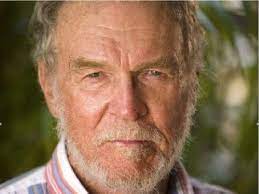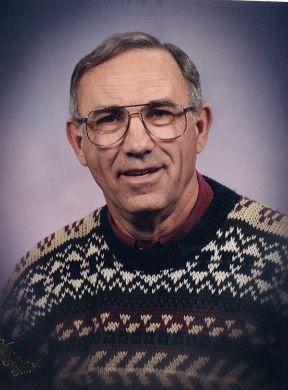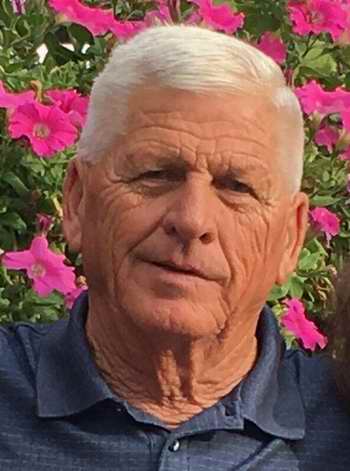No individual had a greater impact on the modern sport of sailing than Bruce Kirby. Known and respected worldwide as the designer of the ubiquitous Laser that now numbers over 250,000, and later became an Olympic Class in two configurations. Kirby had a yacht design career that spanned over forty years, with feet firmly planted in his native Canada and his adopted United States. He was a successful journalist, sailor and designer, and a good friend to anyone who had the pleasure to know him.  Born in Ottawa, Bruce learned to sail out of the Britannia Yacht Club on Lac Deschęnes. He quickly gravitated to the highly competitive International Fourteen Foot Dinghy along with his older brother David, attending regattas in Montreal
and Toronto in the early 1950s. It was at a Canadian Dinghy Association (CDA) Regatta at RCYC in 1951 where he first met a young George Cuthbertson who was the RCYC club measurer. Their lives and careers would continue to be intertwined, culminating with both being named Honorary Curators of the 2014 New Age of Sail Exhibit at the Marine Museum of the Great Lakes at Kingston, and both being the first official inductees to the Canadian Sailing Hall of Fame the same year. Born in Ottawa, Bruce learned to sail out of the Britannia Yacht Club on Lac Deschęnes. He quickly gravitated to the highly competitive International Fourteen Foot Dinghy along with his older brother David, attending regattas in Montreal
and Toronto in the early 1950s. It was at a Canadian Dinghy Association (CDA) Regatta at RCYC in 1951 where he first met a young George Cuthbertson who was the RCYC club measurer. Their lives and careers would continue to be intertwined, culminating with both being named Honorary Curators of the 2014 New Age of Sail Exhibit at the Marine Museum of the Great Lakes at Kingston, and both being the first official inductees to the Canadian Sailing Hall of Fame the same year.
Laser #1 was on display at the New Age of Sail Exhibit at the Marine Museum of the Great Lakes at Kingston in 2014. It was on loan from Mystic Seaport Museum. It was during the 1958 International 14 Team Racing in England that Bruce started to
envision a new International 14 design that would be able to match the New Zealanders upwind. Returning to Canada, he immediately laid down the lines of what would become the Kirby I. Trained in journalism, Bruce by his own admission was “not good at math”, and did not even own a planimeter to measure the sectional areas, relying on counting the squares on the graph paper on which he did the drawings. Built in fibreglass in Montreal, the Kirby I achieved its goal of being consistently the first boat to the weather mark, but was quickly passed by other 14s on the planing reach. The Kirby II soon followed with a much better all-around performance. By then the British were making the transition to Kirby designs and it was the cold moulded McCutheon built Kirby III that took the International 14 world by storm, especially in the talented hands of fellow RLYC sailor Ian Bruce. Ian, sailing his cold moulded Kirby III T’ief-Up, won the renowned Prince of Wales trophy in England in 1967, and remarkably again in 1968 with
the reintroduction of the trapeze to the class. Upon his return to Canada Ian used the hull of T’ief-Up to take off a mold to put the Kirby III into fibreglass production in Montreal with a new company he founded called Performance Sailcraft Inc. (PSI). Keep in mind that 1967 and 1968 were the years that George Cuthbertson and Red Jacket were tearing up the SORC. Bruce even sailed a number of Cuthbertson designs in SORC, including winning his division in the 1968 Nassau Cup aboard the Cuthbertson & Cassian designed Corvette Elektra with George Cuthbertson, George, Hinterhoeller, and Ian Morch in the crew! Those three would go on to create C&C Yachts with Erich Bruckmann the following year. Kirby would later go on to helm the C&C 35 Red Head and the C&C 61 Sorcery in later SORC races. Bruce Kirby receiving his Order of Canada from Governor General Julie Payette. Payette
whispered to Kirby that she too used to sail a Laser. What would become the Laser started in 1969 when Ian Bruce phoned Kirby, who was then living in Chicago as editor of One-Design Yachtsman, to talk about a small car topping sailboat being considered as part of a line of leisure products by the Canadian Department store chain, The Hudson Bay Company. The department store dropped the idea, but then One-Design Yachtsman initiated the “America’s Teacup” regatta at the Playboy club in Geneva, WI, to feature new “off the beach” sailing designs. The little dinghy was finally designed, hastily built and driven to Wisconsin, picking up Hans Fogh and the sail along the way. The little boat had some teething problems and didn’t win the regatta, but people took notice, encouraging PSI to put the little boat that they now called the Laser into production. The Laser made its
debut at the 1971 New York Boat Show where they sold a record 144 boats right out of the box! The Laser was tooled by PSI at the same time as the Kirby V International 14, the first of the “modern” 14s designed for the trapeze, which was also a great success, almost turning the Canadian 14 fleet into a One-Design class. Kirby’s success as a designer of 14s had already prompted Clark Boats in Washington State to put the Kirby IV into production in fibreglass. In 1973, with the increasing popularity of the new IOR racing, they asked Kirby to design a new Quarter Tonner for fibreglass production. At this point in his career, Kirby had never designed a keel boat or a boat to a design formula as complex as IOR. So, turning to his friend George Cuthbertson for advice on things like ballast, stability, and righting moment, Kirby produced the drawings for the remarkably
successful San Juan 24 of which over 1200 were built. The San Juan 24 would generate more IOR certificates than any boat built. The SJ24 was soon followed by the SJ30. Kirby was always proud of the fact that the San Juan 24 predated Doug Peterson’s Gambare and Ron Holland’s Eygthene, initiating the classic IOR shape of wide beam and pinched ends. However, it was the success of the Laser and the royalties that it generated that allowed Bruce to quit the media business and become a full time yacht designer. He and his wife Margo left Chicago and bought waterfront property in Rowayton, CT, where he established his design office in the basement overlooking the Five Mile River as it flowed into Long Island Sound. It was there that he produced a number of iconic one-deign classes including the 23’ Sonar for his Noroton Yacht Club, the Ideal 18 built by Ontario Yachts, and the
Kirby 25 and 30 built by Mirage Yachts. His involvement with IOR did not stop with the San Juans, designing the custom 40’ Runaway which was a member of the three boat 1981 Canadian Admiral’s Cup team along with Bob Herron’s C&C Custom 45’ Amazing Grace (on which I sailed), and John Newton’s Peterson designed Pachena. Bruce Kirby and George Cuthbertson were both inducted into the Canadian Sailing Hall of Fame at the Kingston Yacht Club in 2014. The Canadian Sailing Hall of Fame is administered by the Marine Museum of the Great Lakes at Kingston in conjunction with Sail Canada. (Gregory Cox) In 1982 Canadian Marvin McDill called from Calgary to ask Kirby to design a Canadian 12 Metre to challenge for the 1983
America’s Cup in Newport, Rhode Island. Teaming with C&C Alumnus, Steve Killing, to handle the more technical side of the project, Canada I was quickly built in aluminum and proved very competitive. However, like all the competitors of 1983 she was bested by Australia II and Ben Lexcen’s revolutionary wing keel. Kirby designed his own wing keel for his 8-Metre design Octavia which won the 8 Metre worlds. When asked about his approach to that wing keel, he replied in typical Kirby fashion, “I just took a wild eyed swing at it!” The lessons learned from Octavia were applied to the modifications that produced Canada II for the challenge in Perth Australia, the last year that 12 Metres were used in the America’s Cup. His prowess as a 14 sailor led to Kirby competing in three Olympic Games on behalf of Canada, the 1956 Melbourne games and the 1964 Tokyo in the Finn, the
1968 Mexico City in the Star. It was undoubtedly his experience with the freestanding bendy rig in the Finn that influenced his rig for the Laser. Bruce resisted the temptation to add staff as his design business grew, preferring to work alone and relying on the computer expertise of University of Michigan Naval Architecture graduate Paul Fuchs to transform his hand drawings to digitalized format. Kirby continued to design well into his 80s, primarily restricted to commissions that interested him, such as a custom one-off cruising boat for author Nathaniel Philbrick and a new junior sailing boat called the Pixel. He was recognized for his contributions to sailing many times, being inducted into the Canadian Fourteen Foot
Dinghy Hall of Fame, American National Sailing Hall of Fame, and the Canadian Sailing Hall of Fame. Along with Ian Bruce, Kirby was also inducted into the Order of Canada, the highest honour available to a Canadian citizen. In recognition of Bruce Kirby and fellow CSHOF inductee Ian Bruce, the Marine Museum of the Great Lakes at Kingston will be adding the 1965 McCutheon built Kirby III Windborne to the museum’s collections. Windborne, a sister to T’ief-Up, was donated by Steve Sewel of the RLYC, her original and only owner for the past 56 years. Kirby’s later years were marred by continued legal and trademark struggles with successive builders of the Laser, but despite that he remained upbeat and optimistic in any conversations we had, recognizing that he was “lucky to hit things when they were happening!” Bruce is survived by Margo his wife of 65 years and by two
daughters, Kelly Kirby and Janice Duffy, and two granddaughters. Bruce often referred to his original sketched done on yellow legal pad when taking to Ian Bruce on the phone as his “Million Dollar Doddle”, but it is obvious that everything that he had achieved in sailing and in dinghy design up to that point was leading directly to that doodle. It was perfectly timed to meet the needs of a rapidly expanding sailboat market, and he was the perfect person to make that creation. Bruce Kirby was a good friend. His quiet self-deprecating sense of humour and innate self-confidence will be sourly missed. He embodied everything positive about being Canadian. Rob Mazza Rob is a naval architect / engineer and a member of the Board of Trustees at Marine Museum of the Great Lakes at Kingston, Ontario. He was a designer and engineer during C&C Yacht’s illustrious tenure as Canada’s premier boat builder. |
 Chuck Van de Wetering started the SJ23 web site about 1995. He lived in Friday Harbour, Washington with his SJ23, "Fliegende Hollander," moored close by in the marina. Chuck sailed extensively throughout the San Juan Islands, sometimes with Gene Adams, and I know of at least one long venture he took North to Chatter Box Falls at the end of Princess Louisa Inlet, in BC. He carried several jugs of gas on deck for that trip. Its a long way in and out of that inlet with little to no wind. He described the scenery as stunning.
Chuck Van de Wetering started the SJ23 web site about 1995. He lived in Friday Harbour, Washington with his SJ23, "Fliegende Hollander," moored close by in the marina. Chuck sailed extensively throughout the San Juan Islands, sometimes with Gene Adams, and I know of at least one long venture he took North to Chatter Box Falls at the end of Princess Louisa Inlet, in BC. He carried several jugs of gas on deck for that trip. Its a long way in and out of that inlet with little to no wind. He described the scenery as stunning.  Born in Ottawa, Bruce learned to sail out of the Britannia Yacht Club on Lac Deschęnes. He quickly gravitated to the highly competitive International Fourteen Foot Dinghy along with his older brother David, attending regattas in Montreal
and Toronto in the early 1950s. It was at a Canadian Dinghy Association (CDA) Regatta at RCYC in 1951 where he first met a young George Cuthbertson who was the RCYC club measurer. Their lives and careers would continue to be intertwined, culminating with both being named Honorary Curators of the 2014 New Age of Sail Exhibit at the Marine Museum of the Great Lakes at Kingston, and both being the first official inductees to the Canadian Sailing Hall of Fame the same year.
Born in Ottawa, Bruce learned to sail out of the Britannia Yacht Club on Lac Deschęnes. He quickly gravitated to the highly competitive International Fourteen Foot Dinghy along with his older brother David, attending regattas in Montreal
and Toronto in the early 1950s. It was at a Canadian Dinghy Association (CDA) Regatta at RCYC in 1951 where he first met a young George Cuthbertson who was the RCYC club measurer. Their lives and careers would continue to be intertwined, culminating with both being named Honorary Curators of the 2014 New Age of Sail Exhibit at the Marine Museum of the Great Lakes at Kingston, and both being the first official inductees to the Canadian Sailing Hall of Fame the same year.  My connection to the SJ23 website
has been a little difficult lately but I wanted to
pass on a bit of sad news. Dave Clark passed away subsequent to
injuries sustained in a fall at his home in Payson, AZ.
Brother Dennis shared the news as we were catching up, trying to emerge from this pandemic and beginning to feel like real people again.
My connection to the SJ23 website
has been a little difficult lately but I wanted to
pass on a bit of sad news. Dave Clark passed away subsequent to
injuries sustained in a fall at his home in Payson, AZ.
Brother Dennis shared the news as we were catching up, trying to emerge from this pandemic and beginning to feel like real people again. 